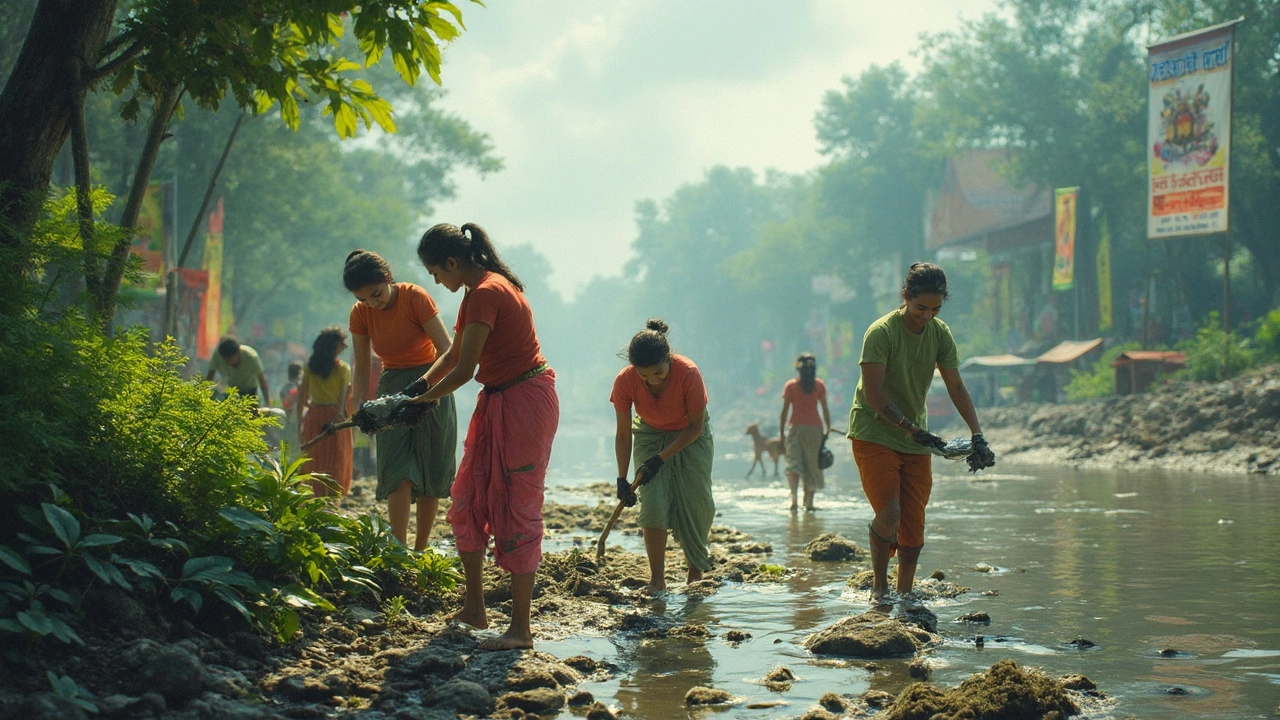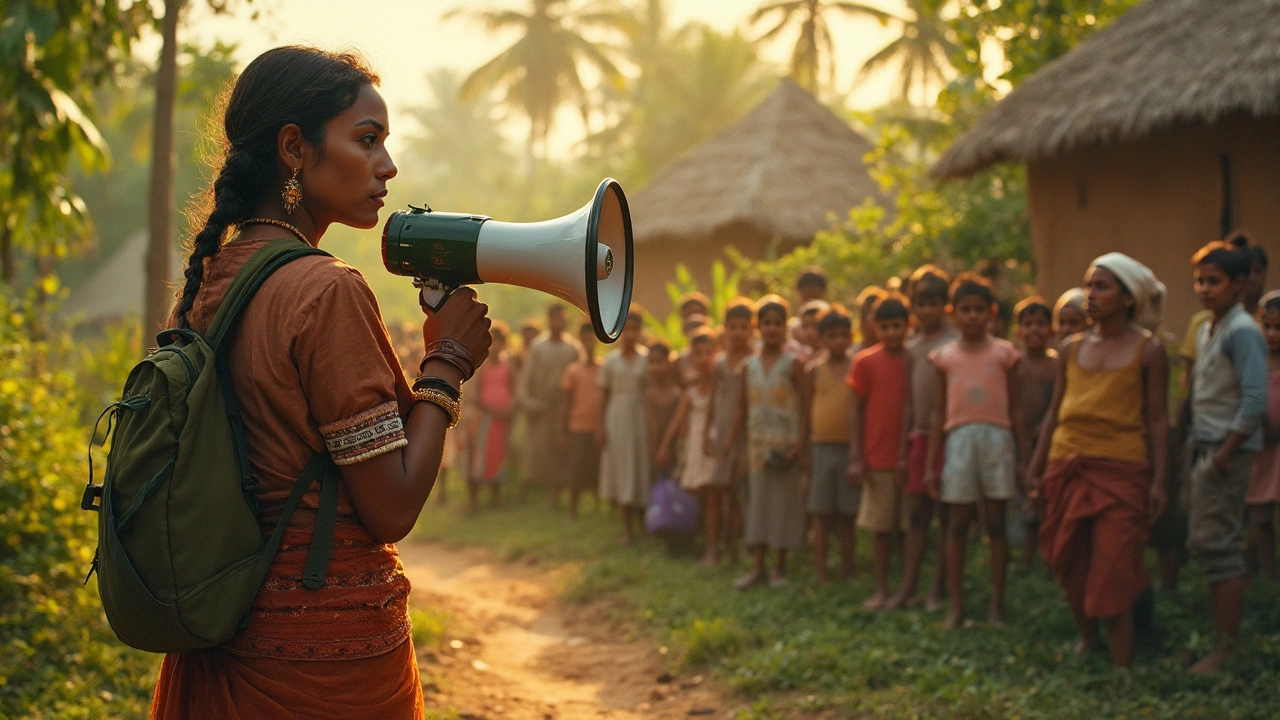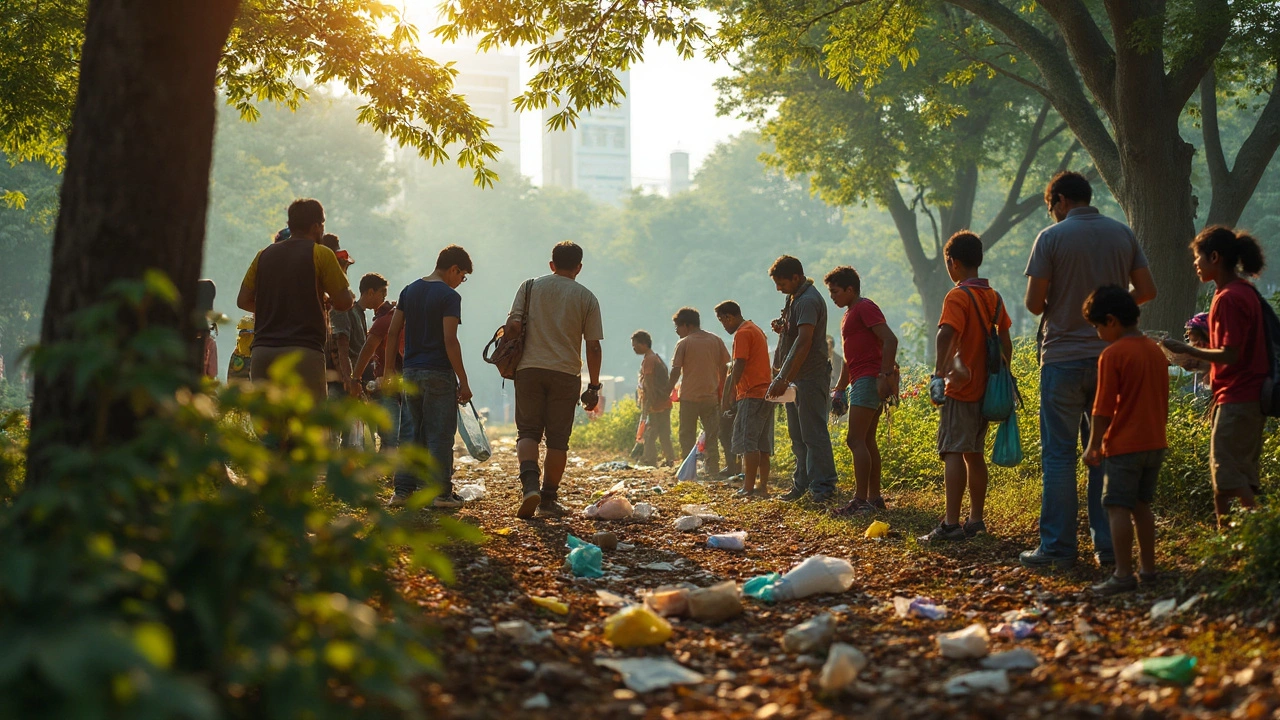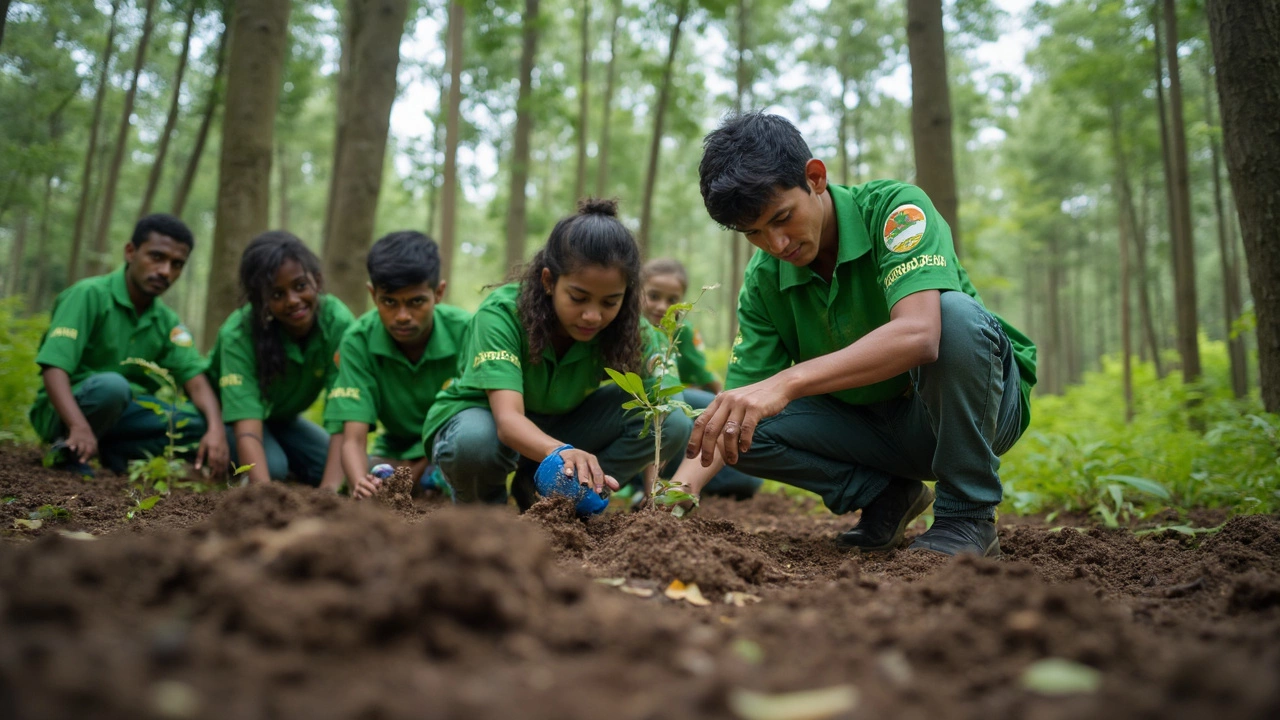If you’ve ever wondered who is out there fighting for the environment, this article breaks down what environmental groups are, how they work, and why they matter. You’ll get the inside scoop on what these groups actually do, see some examples in action, and pick up ideas to get involved yourself. There's a lot more to these organizations than tree planting. By the end, you’ll know exactly how environmental groups can make a real difference—and how you can support them.

- Created by: Lydia Carmichael
- Completed on: 12 Jun 2025
- Categories: Environment
If you’ve ever tried to find a good environmental group, you know the list is endless, and every website looks green and hopeful. But not all groups are cut from the same cloth. Some do massive, headline-grabbing campaigns; others quietly plant trees in the neighborhood park while you’re at work. Figuring out the difference isn’t always easy, but it matters if you want your time and money to actually help the planet.
The first thing to look for? Results. A legit group should tell you exactly what they’re doing, not just talk about future goals or big dreams. Check their latest wins—have they cleaned up a river, changed a law, or just sent lots of emails?
- How Environmental Groups Work
- Famous Groups You’ve Probably Heard Of
- Hidden Gems: Local and Niche Eco Warriors
- How to Join In (Without Getting Overwhelmed)
How Environmental Groups Work
If you’re picturing marches and protests, that’s only a small part of what environmental groups actually do. Most of their real work happens in offices, labs, forests, city halls, and sometimes in courtrooms. These groups fall into a few main types: some focus on changing laws (think lobbying and legal action), while others lean more into action like cleanups, tree plantings, or caring for endangered animals. There are even groups dedicated to research, tracking down pollution, or teaching local communities about recycling and sustainability.
Funding is a huge piece of the puzzle. Most environmental groups get their money from individual donations, foundation grants, and sometimes even businesses that want to seem greener. Big organizations, like Greenpeace and the World Wildlife Fund, run major fundraising campaigns and even sell branded merchandise. Smaller groups may just rely on bake sales or crowdfunding.
Here’s how they generally spend their cash and energy:
- Environmental groups campaign for new laws to protect air, water, or wildlife—sometimes with teams of lawyers or lobbyists.
- Plenty of groups organize hands-on activities, like restoring wetlands, cleaning up beaches, or freeing animals caught in fishing gear.
- Some run public education: school visits, online guides, and practical workshops to help people shrink their carbon footprints or live greener lives.
- A few focus mostly on research, gathering facts and evidence for everyone else to use when arguing for change.
If you’re tracking their progress, look for annual reports or news stories about what they’ve actually accomplished. Real results mean more than just talk or flashy websites. Always check if a group is transparent with how they spend donations—solid info usually means they’re serious about their mission.
Famous Groups You’ve Probably Heard Of
If you care at all about the planet, chances are you’ve bumped into the big names—sometimes they pop up in the news, sometimes in your Facebook feed. These environmental groups aren’t just famous for their logos or merch; it’s their work that put them on the map. Here’s what actually sets a few of the most well-known apart from the pack.
- Greenpeace: Started in 1971 by activists who wanted to stop nuclear testing. They’re global now, known for bold stunts like climbing oil rigs or hanging banners on skyscrapers. Greenpeace pushed several countries to ban commercial whale hunting. They’re often in the thick of fights against plastic pollution and climate change.
- World Wildlife Fund (WWF): That panda logo is everywhere for a reason. WWF isn’t just about saving animals—they work on climate, forests, water, and food systems too. They protect over 1,800 species and have more than 5 million supporters. One cool fact: they helped double the wild tiger population in Nepal between 2009 and 2022.
- Sierra Club: Founded way back in 1892, they helped create many of the U.S. national parks. Today, their members lobby lawmakers and organize clean-up events, pushing for renewable energy and public lands protection. They’re now focused heavily on getting cities and states to ditch coal and move to 100% clean power.
- Friends of the Earth: This network spans 73 countries. They tackle everything from polluting industries to pesticides in farming. These folks have pushed the EU to cut single-use plastics and regularly sue corporations and governments over dirty practices.
Wondering which group actually moves the needle? Here’s a look at reach and scale:
| Group | Started | Members/Supporters | Main Focus |
|---|---|---|---|
| Greenpeace | 1971 | Over 3 million | Climate, Oceans, Forests |
| WWF | 1961 | 5 million+ | Wildlife, Forests, Climate |
| Sierra Club | 1892 | 3.8 million | Energy, Public Lands |
| Friends of the Earth | 1969 | 2 million+ | Advocacy, Legal Action |
All these groups accept volunteers and donations. But here’s the thing—big groups aren’t always better. While they shape policy, smaller outfits often create real, local change. Still, if you want to make noise or push world leaders into action, these big names make waves (and sometimes headlines).

Hidden Gems: Local and Niche Eco Warriors
Everyone’s heard of big names like Greenpeace or the Sierra Club, but sometimes the real action is happening right in your backyard. Local environmental groups might not have flashy websites, but they’re out there digging, cleaning, and making a visible impact. Some focus on just one park or river, some are all about urban gardening, and others rally people for monthly trash cleanups or recycling drives.
Take the Surfrider Foundation, for example. While it’s known along the West Coast, it’s driven by dozens of small chapters, each tackling beach cleanups and pushing for plastic bans in their own city. Or check out Urban Roots in Detroit—they started out by planting vacant lots, and now run community gardens that feed local families directly.
It isn’t just cities that have these groups, either. In rural Vermont, the White River Partnership gathers volunteers to plant thousands of trees along riverbanks to prevent erosion. Data shows small groups like these can have outsized impact: From 2022-2024, U.S. local initiatives collectively removed 6 million pounds of trash from waterways, according to the National Water Quality Monitoring Council.
What makes these “hidden gems” different? They’re usually:
- All about action (not talk)—You’ll see projects listed right on their websites or social media.
- Transparent with donations—You’ll know if your five bucks buys a tree, a trash bag, or pays for an ad.
- Easy to join—No need for fancy forms or fees. Sometimes you just show up and get to work.
Here’s a quick look at just a few standout local and niche groups making real change:
| Group Name | Location | Main Focus | Recent Win |
|---|---|---|---|
| Urban Roots | Detroit, MI | Community Gardens | Donated 25,000+ lbs food in 2024 |
| White River Partnership | Vermont | Riverbank Restoration | Planted 10,000+ trees last year |
| Los Angeles Waterkeeper | Los Angeles, CA | Water Cleanups | Removed 120,000 lbs trash since 2023 |
If you want to put your energy somewhere it’ll count, ask around about groups in your area. Local Facebook groups, community boards, and even your city’s website often have lists of eco meetups or hands-on projects. Sometimes the best way to get involved with environmental groups is literally just showing up with a pair of gloves and a smile.
How to Join In (Without Getting Overwhelmed)
Jumping into the world of environmental groups can feel like stepping onto a treadmill that’s already going too fast. Good news: you don’t have to solve climate change overnight. Small steps matter, and you can start close to home. The trick is to pick your focus, figure out what you have to give (time, money, skills), then go for a group that lines up with you.
First, decide what motivates you. Are you worried about plastic in the oceans? Big fan of clean energy? Want safer playgrounds for your kids? Once you’ve got that sorted, look for groups that do real work in those spots. Don’t just trust the name of the group—dig into their latest projects or reports. For example, Greenpeace, Sierra Club, and Friends of the Earth all post yearly impact reports on their websites, and most legit local groups do too. If they’re quiet about what they actually achieve, move on.
Here’s an easy way to get started, without burning out:
- Pick just one topic or group that excites you, not five at once.
- Start with small actions—attend a meeting, do a short volunteer shift, or sign a petition.
- Set a time budget. Even two hours a month can help, and you won’t feel guilty about not doing more.
- Check out online groups if meetings don’t fit your schedule. Lots of great work happens on Zoom or social media.
- Talk to people already involved. They’ll tell you what’s rewarding (and what’s a pain).
As Jane Goodall—probably one of the most down-to-earth environmental voices—put it:
“What you do makes a difference, and you have to decide what kind of difference you want to make.”
It can help to know where your help lands hardest. Here’s a quick table showing what different actions do for the average environmental groups:
| Action | Average Impact (per year per volunteer) | Good for Beginners? |
|---|---|---|
| Park or beach cleanup | Removes 30-100 lbs of trash | Yes |
| Letter-writing to lawmakers | 1-2 new policy changes per 1000 letters | Yes |
| Tree planting with local groups | Up to 40 trees planted | Yes |
| Social media advocacy | Can reach 500+ people | Yes |
Small, regular actions from lots of people—that’s what changes things. You don’t need to be an expert, just someone who cares enough to start. If you stick around long enough, you’ll see that plenty of others are quietly doing their small part too.
Wondering which environmental groups actually do something? This article breaks down how to spot real action-takers versus loud talkers, and shares tips for getting involved whether you like to join big organizations or prefer hands-on community groups. Learn where your efforts and donations go furthest, and get inspired by success stories you might not know. If the planet’s future matters to you, you’ll find concrete steps here.
Greenpeace is a renowned environmental group known for its bold actions and campaigns to protect the earth. Founded in 1971, this international organization tackles issues like deforestation, global warming, and ocean pollution. With a presence in over 55 countries, Greenpeace uses non-violent confrontation to raise awareness and bring about change. This article explores their key initiatives and how individuals can get involved with their efforts.

